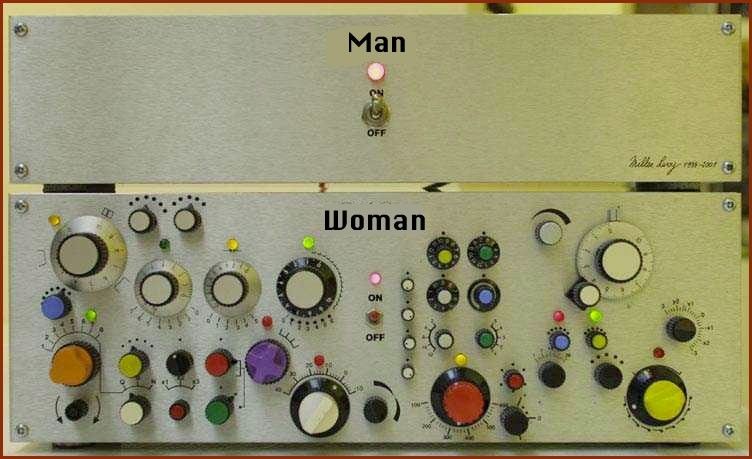
Paradox, anyone? How about this: In order to be different at all, you first have to be the same. But another paradox is even more counterintuitive: those who today preach about the importance of being ‘diverse’ more often than not end up producing more and more of the same. Sounds strange, but think about it. Those truly interested in being different begin necessarily with sameness, with an established traditional identity, and then unfold within it a peacock’s tail of differences, and without for a moment detracting from the sameness; it is not a zero-sum game.
The apologists for diversity, more often than not, begin with differences, and then in the name of pluralism and equality, progressively mow them down, producing more homogeneity. The overlooked fact is that the truly different presupposes an established sameness, upon which it builds within an already present structure, and without which its very difference fades rapidly into a pastel background and soon vanishes.
The proponents of the current fad of ‘diversity’ (whether of gender, culture, expression, whatever) ironically set forces in motion which only too often erase or blur natural and traditional differences and generate an obligatory uniformity, usually under the rubric of ‘political correctness’. And this happens even when it is deceptively camouflaged in party masks of faux originality and melodramatic poses of boldness. I can’t say it any more clearly than that, but I can provide some explanation.
If we stop and think for a moment, we will realize that we don’t use the word ‘different’ about things or acts that are, so to speak, worlds apart. Things that differ have to be comparable. No one will comment on how different a labrador retriever is from the black hole Cygnus X-1, or what an impressive difference lies between blowing your nose and planning a trip to Europe. In traditional classifications of things (even in the more day-to-day business of putting matters in order), we normally need, first of all, what used to be called a ‘proximate genus’ before we could invite a ‘specific difference’; these two then allow the mind to isolate a more definite logical ‘species.’
A labrador retriever can only differ from a collie because both are dogs; and a dog can only differ from a cat because both are quadruped mammals; and a square from a triangle because both are figures. And, on a more polemical note, a man from a woman because both are human beings. You can’t just be ‘animal,’ you must be some kind of animal. And there is no such thing as a pure figure: it has to be an oval, or a square, or a triangle, etc., in order to be a figure at all. And you can’t just be a hybrid human; you must be a man or a woman in order get a hold on humanity at all (the rare, and important, exceptions will be addressed presently).
Differences, in a word, are rooted in nature, or in the natural order of things. We discover them with our cognitive faculties (our senses and reason), and though we may, in the normal course of things, react to them with our appetitive functions (emotions and the will), these do not, and cannot constitute them. In fact, they could hardly even react to them if they were also charged with the task of constituting them.
The curious feature of recent secular sermons in praise of ‘diversity’ is that they typically whitewash over blatant and manifest differences with impunity, plastering them over with buzz words that appeal to the appetites of many, but to the minds of none. I do not think this is always a mere oversight. As in most fervent social campaigns, there are reasons somewhere behind the simplistic slogans and gestures. As always, philosophers may cogitate for decades on their academic mountaintops, but the streams of their ponderings sooner or later flow down to the rest of us in the valley.
Two philosophical currents of great thrust were born in the afflicted 14th century. Those hundred years were great for mysticism, poetry, some advances in logic and philosophy of language, and notable inaugural projects of modern scientific method, but hardly for philosophy and theology as overarching projects. It was ripe for a couple of modernity’s favorite ideologies. These two currents usually go hand in hand, as do most ideas or systems that wish to address both cognitive and appetitive dimensions of human existence. After all, if they are to address human reality comprehensively, they must have something to say about both theory and practice, knowledge and action, truth and love.
 (Look around at the nearest hodgepodge of things – or this image to the left – and you’ll be primed for the following.)
(Look around at the nearest hodgepodge of things – or this image to the left – and you’ll be primed for the following.)
The first of these currents is usually called nominalism. It was the victor in a long medieval debate over the nature of universality in the way we use concepts and words. The medieval world saw long labors of intuition and ratiocination, cultivated in prolific centuries of Greek, Arabic and Latin examination of human knowing.
Much subsequent scholasticism grew less like a healthy tree in the sun, and more like a plant left to grotesquely ramify with pasty palor in the cellar. After Albert, Thomas and Bonaventure had lifted Latin Scholasticism to its greatest synoptic visions (multiple but not incompatible), the following century looked elsewhere. But also, the slowness in absorbing Aquinas’ metaphysical profundity left the erudite world to ponder more mundane and practical matters. This was, after all, the century of the Great Plague, and of considerable population shifts. Among the new priorities was the following: the advantages to be drawn from dropping ‘essentialist’ aspirations and seeing things basically as diverse, heterogeneous objects, devoid of detectable essences, suitable only to be used. This soon became a tempting new approach to understanding the world around us, and to taking (or the word should probably be ‘grabbing’) hold of it.
Things with their natures came to be seen no longer as realities upheld by indwelling structures participating imperfectly but robustly in what were understood to be the archtypal Ideas in the mind of God, but instead as brute, irreducible individual objects. As such they stood in need of our intellect’s creative work of corralling them into artificial pigeon holes of the mind’s own making, and then doing with them as we pleased. Individual diversity elbowed out universal essences, but at the same time seductively invited practical, and ever more technical interventions. The differences between individual things got cut loose, more and more, from their essential bedrock, which till then had displayed their commonality and their integration into the rest of the cosmos. These orphaned objects wandered about, as it were, looking for gainful employment, and showed off their strengths in fielding new occupations (like athletes trying to get recruited). The nominalists suggested we simply make do with finding useful names for them and then get on with the serious business of finding out how best to use them.
Even in the 14th century, the advent of a subjectivist, constructionist view of the mind’s cogitations is already on display, and the majority of subsequent, trend-setting modern philosophers will be nominalists as well (whether or not they use the term). However, the mind always moves in tandem with the will. A companion ideology simultaneously, and predictably, appears as nominalism’s logical mate. If things have no essences which the mind can universally grasp in their individual instances (both  rooted, ultimately, in the exemplary, archetypal divine Logos), and thus no realistic ‘anchor’ of entity by which to measure the mind’s concepts, judgments and reasonings; and indeed, if God Himself is seen, more and more, as the almost whimsical Craftsman whose omnipotent Will is the source of things not only being there, but also being what they are; then, the human will is bound to interpret this as giving it new warrant to attack and manipulate that world of utterly diverse things, and to do so according to the mandates of its own wanting. This prioritizing of will over mind, of power over reason, of whim over providence, is traditionally called voluntarism.
rooted, ultimately, in the exemplary, archetypal divine Logos), and thus no realistic ‘anchor’ of entity by which to measure the mind’s concepts, judgments and reasonings; and indeed, if God Himself is seen, more and more, as the almost whimsical Craftsman whose omnipotent Will is the source of things not only being there, but also being what they are; then, the human will is bound to interpret this as giving it new warrant to attack and manipulate that world of utterly diverse things, and to do so according to the mandates of its own wanting. This prioritizing of will over mind, of power over reason, of whim over providence, is traditionally called voluntarism.
Much ink has already been spilt over this topic and I have no intention of belaboring it here. I will only suggest that the line is thicker rather than thinner that connects these two ideological convictions – nominalism and voluntarism – with most of our greatest modern dystopic creations: in the political and economic order, with Fascism and Soviet and Maoist Communism – in both of which individuals become dispensable pawns in a humanly devised program of perfection; in culture, with a consumerism that finally drowns out all criteria of beauty and even utility in a quantitative deluge of gadgets and manufactured needs (with buyers pondering earnestly over what brand of a virtually infinite selection of breakfast cereals or pollutant coffee pods to buy); in the scientific/technological order – the marriage of these two adjectives is itself a consequence of the forces under discussion – in the thousands of precariously poised nuclear warheads our modern world has produced but has no idea how to control; and finally, sadly, in our beautiful oceans increasingly choked with plastic bags and bottles.
A more modest and measured development of science and technology, maintaining most of their indisputable benefits, was made impossible by these two philosophical engines humming in the background. They brooked no checks and balances on the voluntaristic will of man to reach indiscriminately into a material world no longer safeguarded by a radiance of inner natures. We lost the ability to read the eloquent symbolic language that the universe spoke in saner times, and instead learned to view it as presenting itself ‘willingly’, even promiscuously, as an indifferent materia prima in the capricious hands of modern technocrats.
A more recent, but still logically coherent, fruit of nominalism and voluntarism is precisely the confusion between difference and diversity I began with. Although this conceptual turmoil passes through multiple dimensions of contemporary thought, it is nowhere more palpable, and more devastating, than in the downplaying and eroding of what is scientifically evident on genetic, chromosomal, hormonal, cerebral and psychological levels all at once – not to mention the overwhelming testimony of the human body – that is, that man and woman are very different, and that this difference is given, not produced. And furthermore, that it is a difference deeply rooted in the one nature they share.

Like all things that are evident, when you start arguing about them, the discourse gets murky and we end up perplexed – not, mind you, because the matter itself is murky, but because when ratiocination intrudes upon the intellectually intuitive, the wrong instrument is at work and native light slowly darkens in the presence of an alien agency (something like the dimming of the theater lights when a movie begins). Reason has no real work where intellect is fully in deployment. You needn’t prove what you already know, or look and search assiduously for what you already see. It’s the wrong tool. It’s like trying to paint a painting with a violin, or to drive a car by putting a bicycle in the driver’s seat. It not only abuses the tool, it also frustrates the objective at hand.
Furthermore, by mixing heterogenous faculties, it creates unnecessary anxiety. There is an analogous situation we all experience in breathing. We ought to breathe, in principle, automatically, without our rational consciousness attending to each breath; when we do direct our attention to respiration as such (unless we have good reason as, say, in the doctor’s office or in controlled meditation), it suddenly turns arduous and we can even get slightly panicky. So it happens with matter-of-course evidences. We naturally and instinctively pick up – even as small children – that there is a vast and wonderful difference between a man and a woman, between your mom and your dad; and we simultaneously pick up that that very distinction is outlined against an equally intuitive grasp of their identical nature. They are able to be different (in sex or gender) because they are the same (in nature). This childhood insight is virtually bursting with philosophical implications.
And science gives its own vindication of every infant’s instinct. It is unanimous in charting and measuring this difference as irreducible (not that the purveyors of diversity could care less). When exceptions occur – for example, in the relatively rare cases of inter-sexuality or gender dysphoria – they are medically viewed precisely as exceptions, and those who bear such conditions should be treated with as much respect as any other exceptional person. Exceptions prove the rule, as the saying goes – they do not constitute the rule, or create a new rule. Borderline cases and sexual ambiguity do draw attention, however, to the interesting fact that our common human nature does, in the final analysis, transcend sexual differences, and such exceptional individuals are like nature’s reminder that there is more in our destiny than just being male or female. Christians view their ultimate destiny, after all, as one where marriage, and by implication sexual identity, will no longer play the role they do here below (Mt. 22,30). So we should all relax about getting too insistent, in an exaggerated sort of way, about our masculinity or femininity.
But Christian or not, we are all still living here below, where femininity and masculinity structure our world in all sorts of salutary ways. And beyond all the dimensions of our personality, our style, our fashion sense, our acquired abilities, our bodily fitness and our training in this or in that – in short, all those matters which lie to a large degree under the sovereignty of our wills – there are other dimensions we receive from nature, and from nature’s God, which lie beyond the behest of even the most resolved human will. Except for those very few and clearly exceptional cases of sexual ambiguity, it cannot lie under the power of the will to determine – forever, or even for a season – that you are a man when you were born a woman, or vice versa. To do so is to deny the real distinctions of nature and produce an identity fashioned by art: the art of diversity. Since science won’t help the evangelists of diversity, they predictably turn to art. Make yourself!
And do note, the words ‘diversity’ and ‘diversion’ are – not without serious implications – related. Any imperial, voluntarist diversity (giving our will the last word on who and what we are) is mere diversion, a kind of adolescent play, a theater of pretending, promoted by a will that wishes to lord it over nature. Thus, what we are offered is the pretentious hope of living out an existence that is utterly singular, irreducibly concrete, totally original – being a self-made person who belongs to no species, submits to no natural law and decides not only what it shall do or what role in society it shall play, but what it ontologically is.
One exchanges the vast universe of possibilities and true differences which opens itself to the person who embraces the limits of their nature and their sex – and which allows one to enter into the world of true moral liberty (where the virtues, far from restricting, actually optimize our powers) – for a life of slavery under the worst dictatorship under heaven: that of a tyrannical human will turned in on itself. Instead of admiring nature and cooperating with her, one tries instead to dominate her. Instead of studying and learning from nature with Dr. Einstein, one may well end up enslaving or destroying it, like Dr. Frankenstein.


